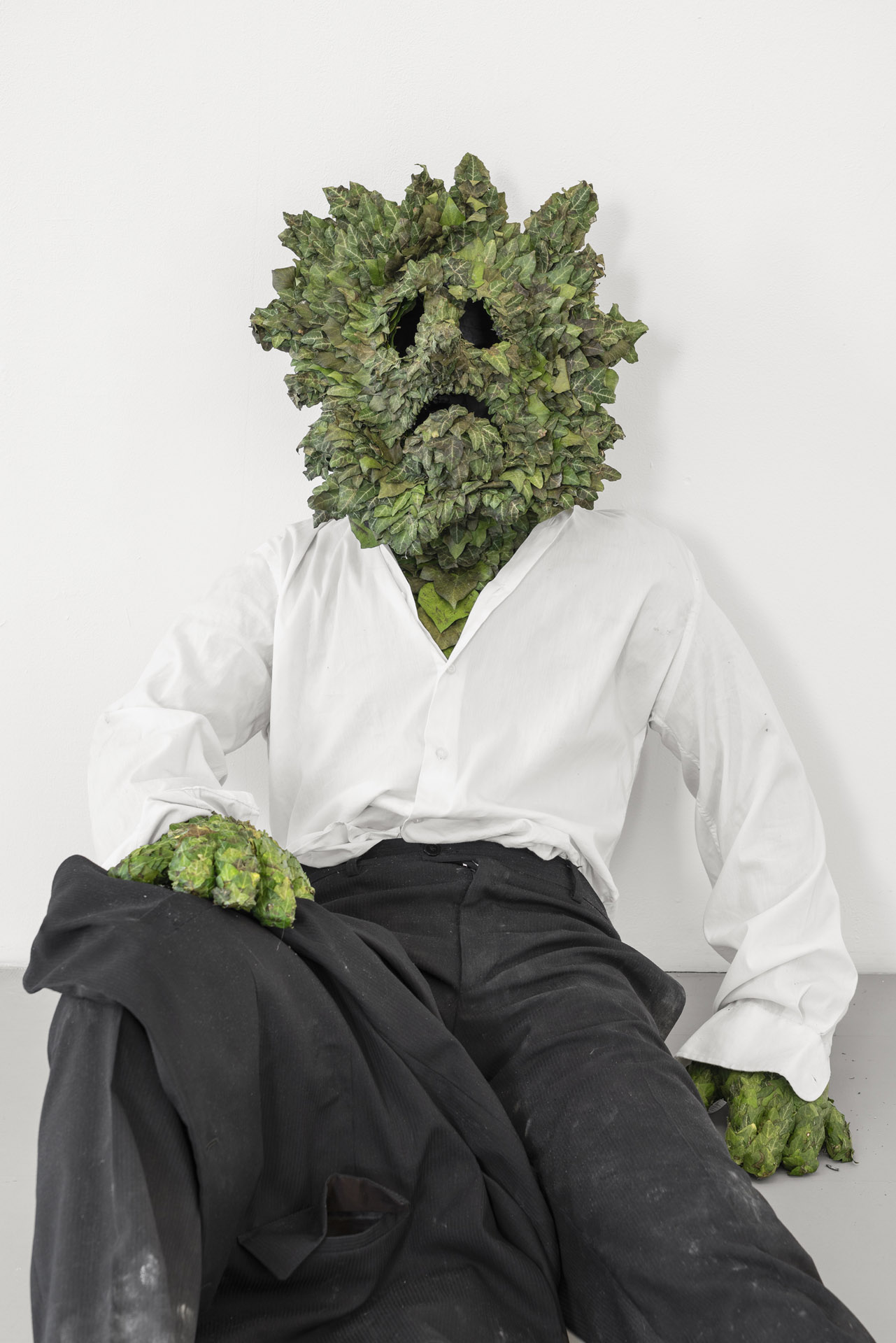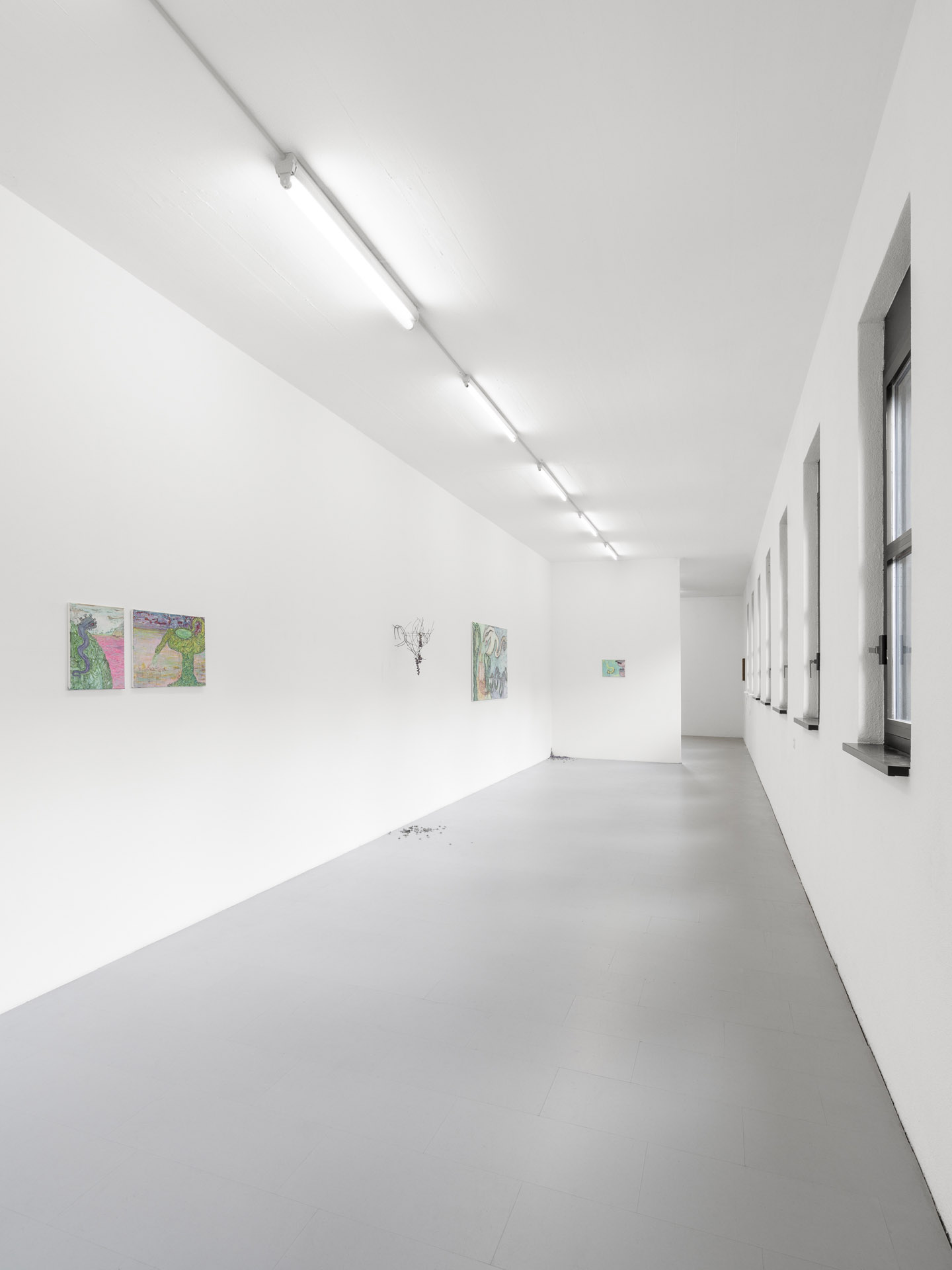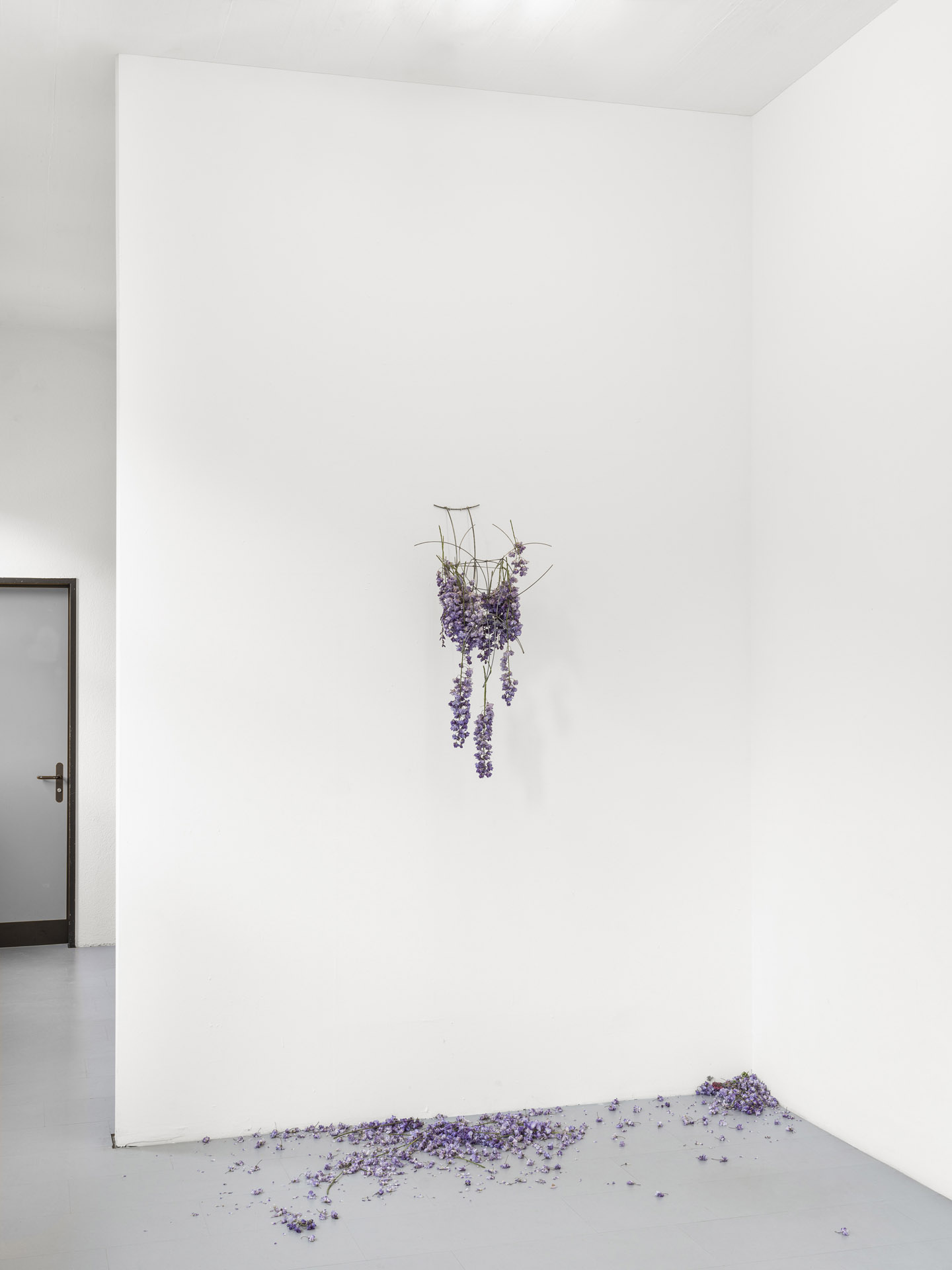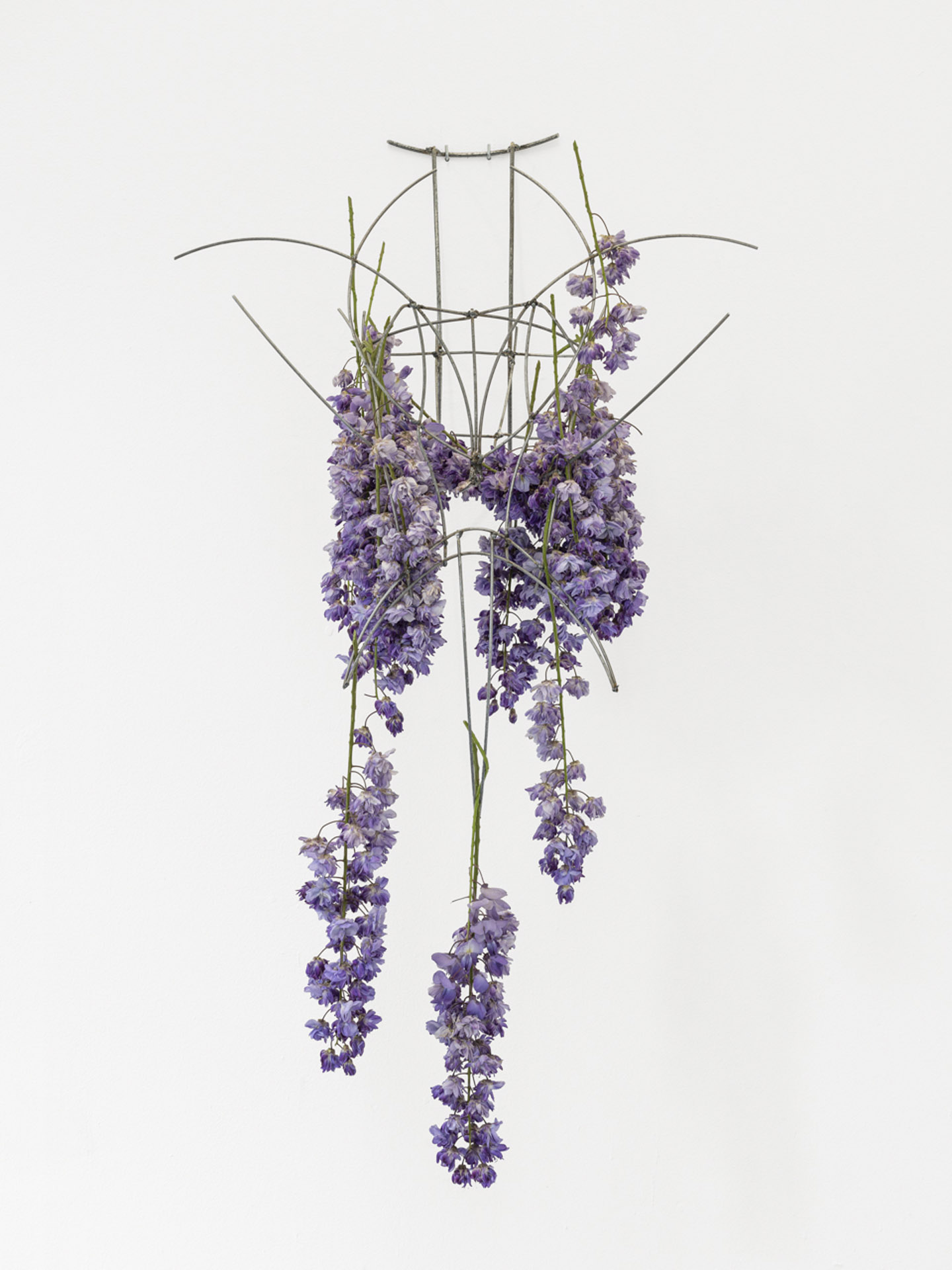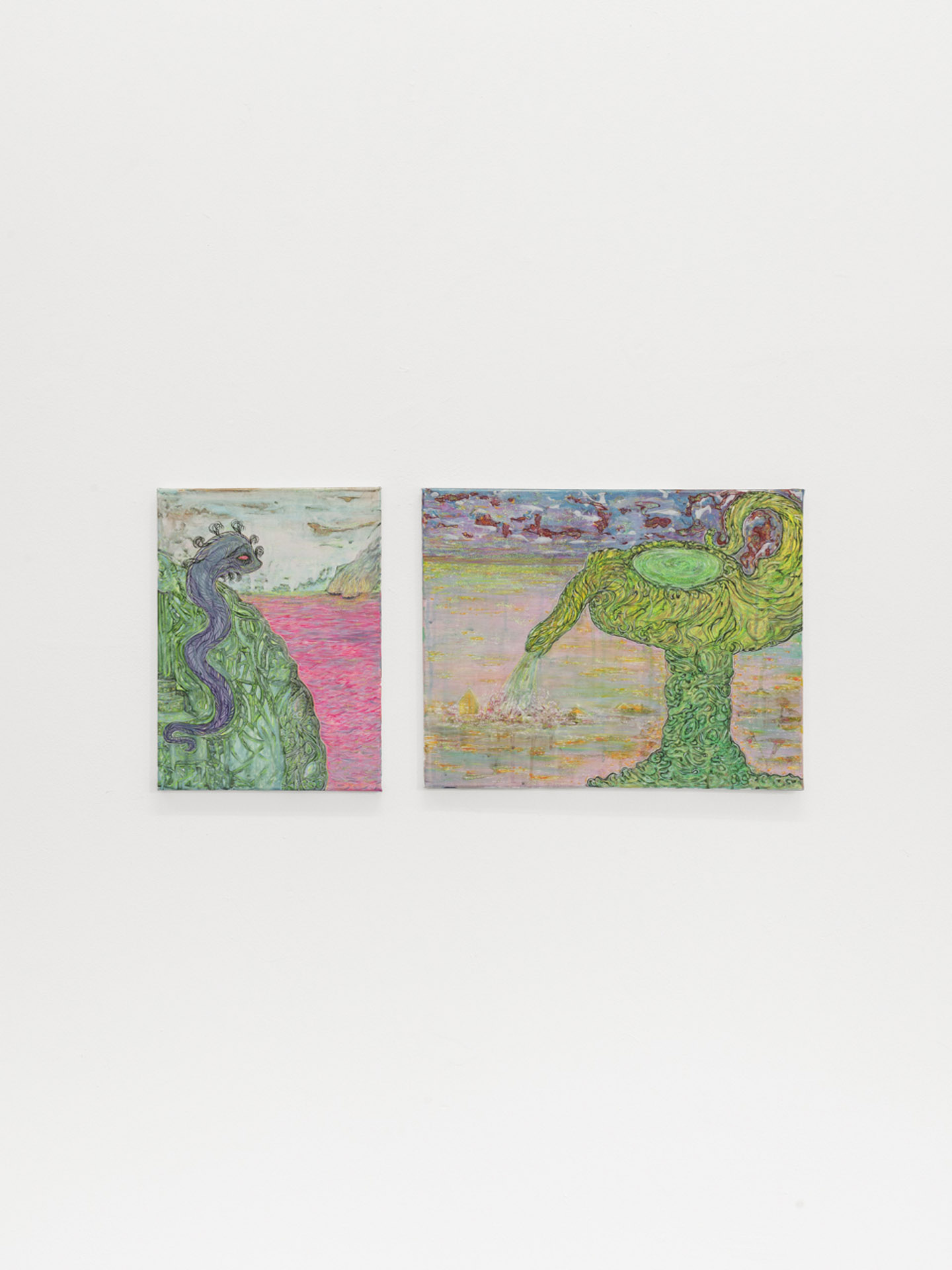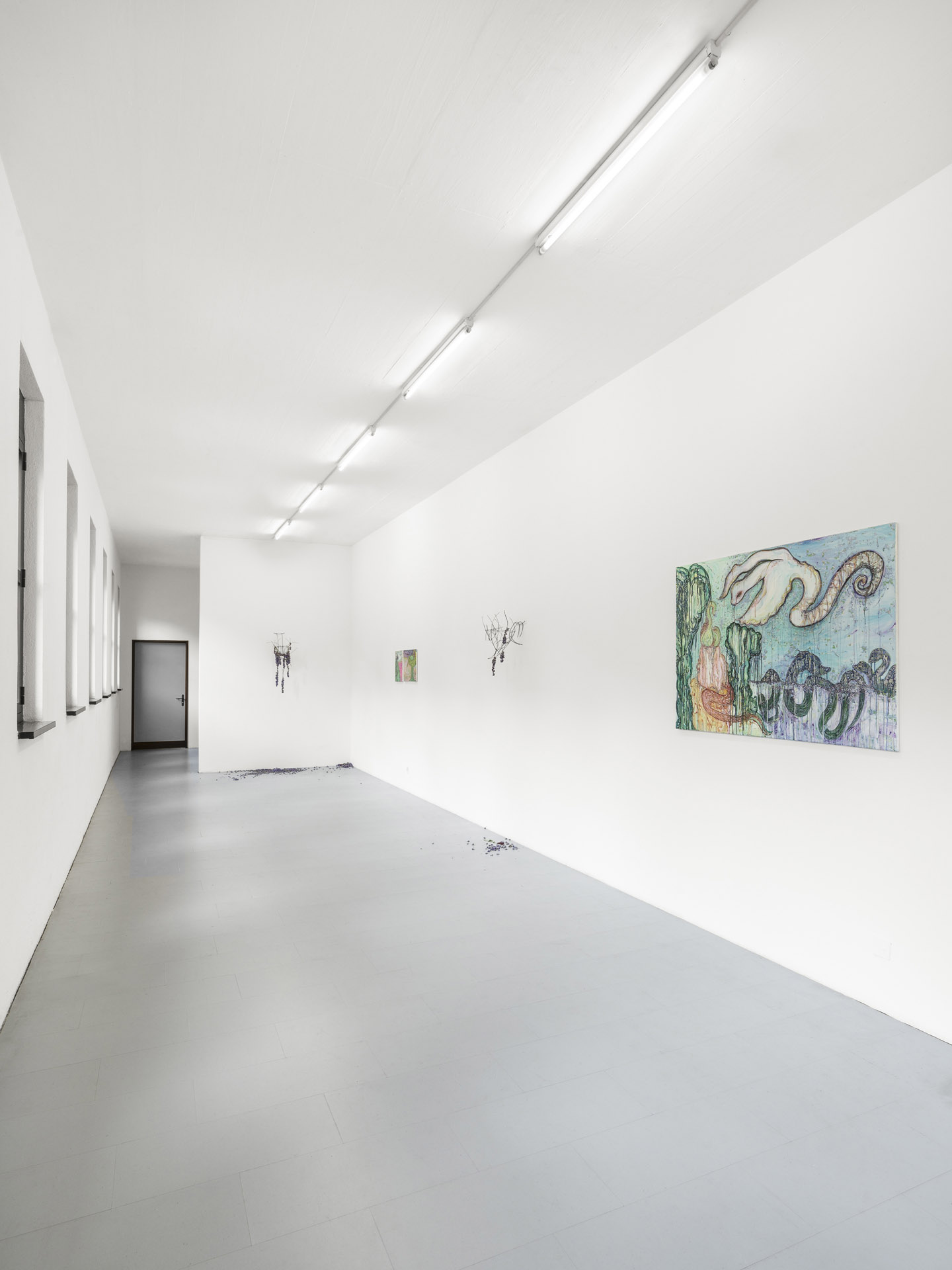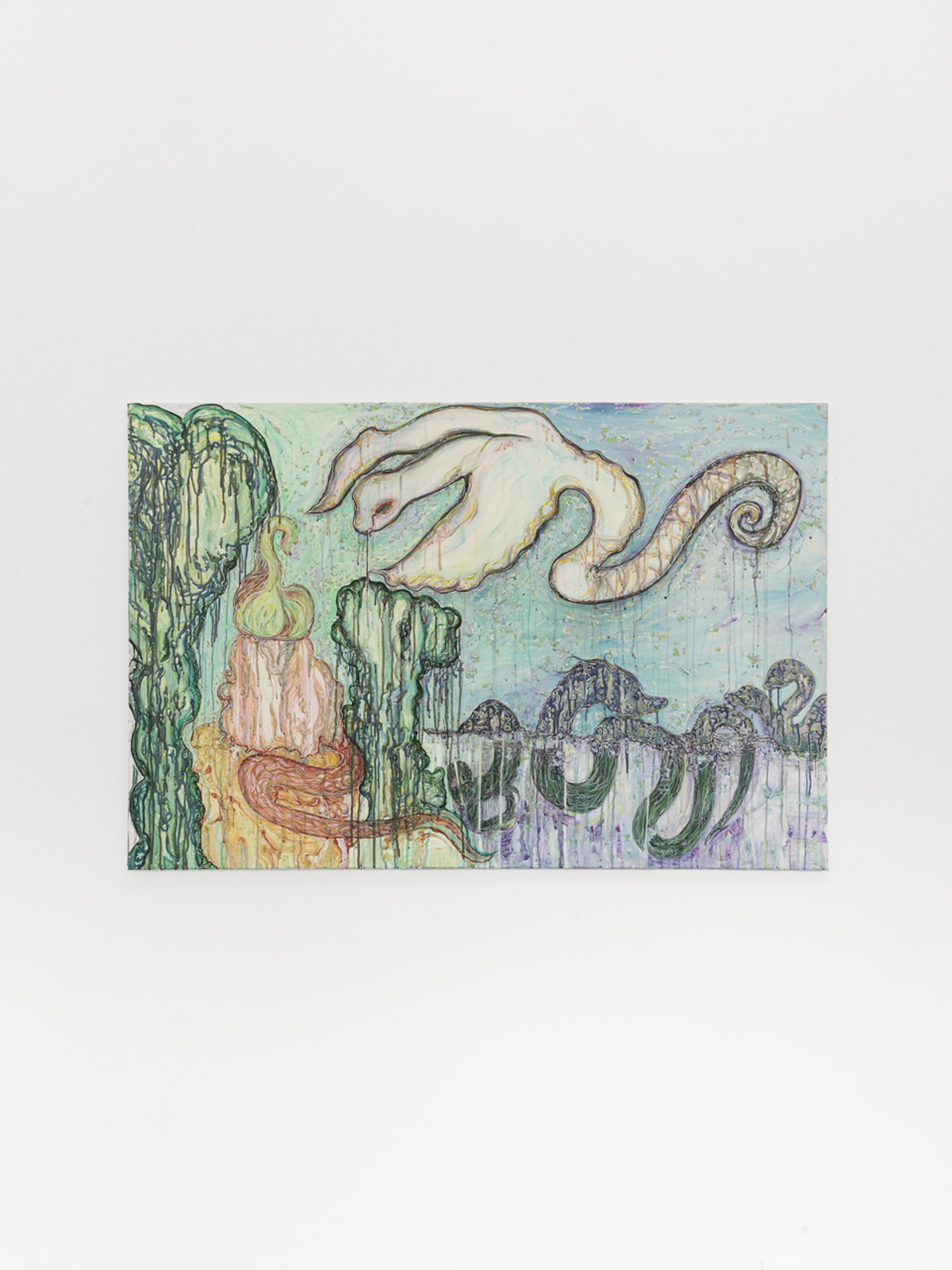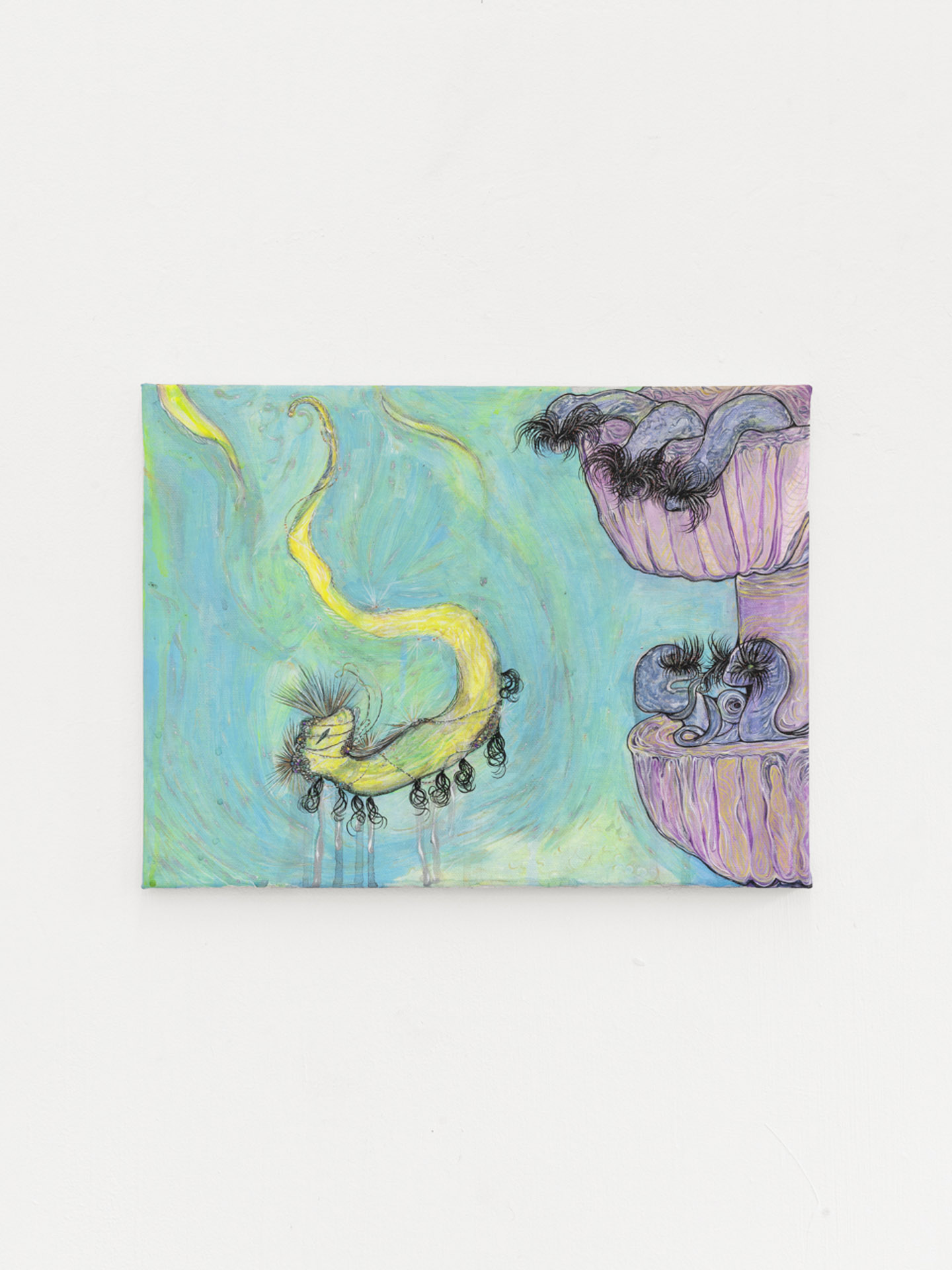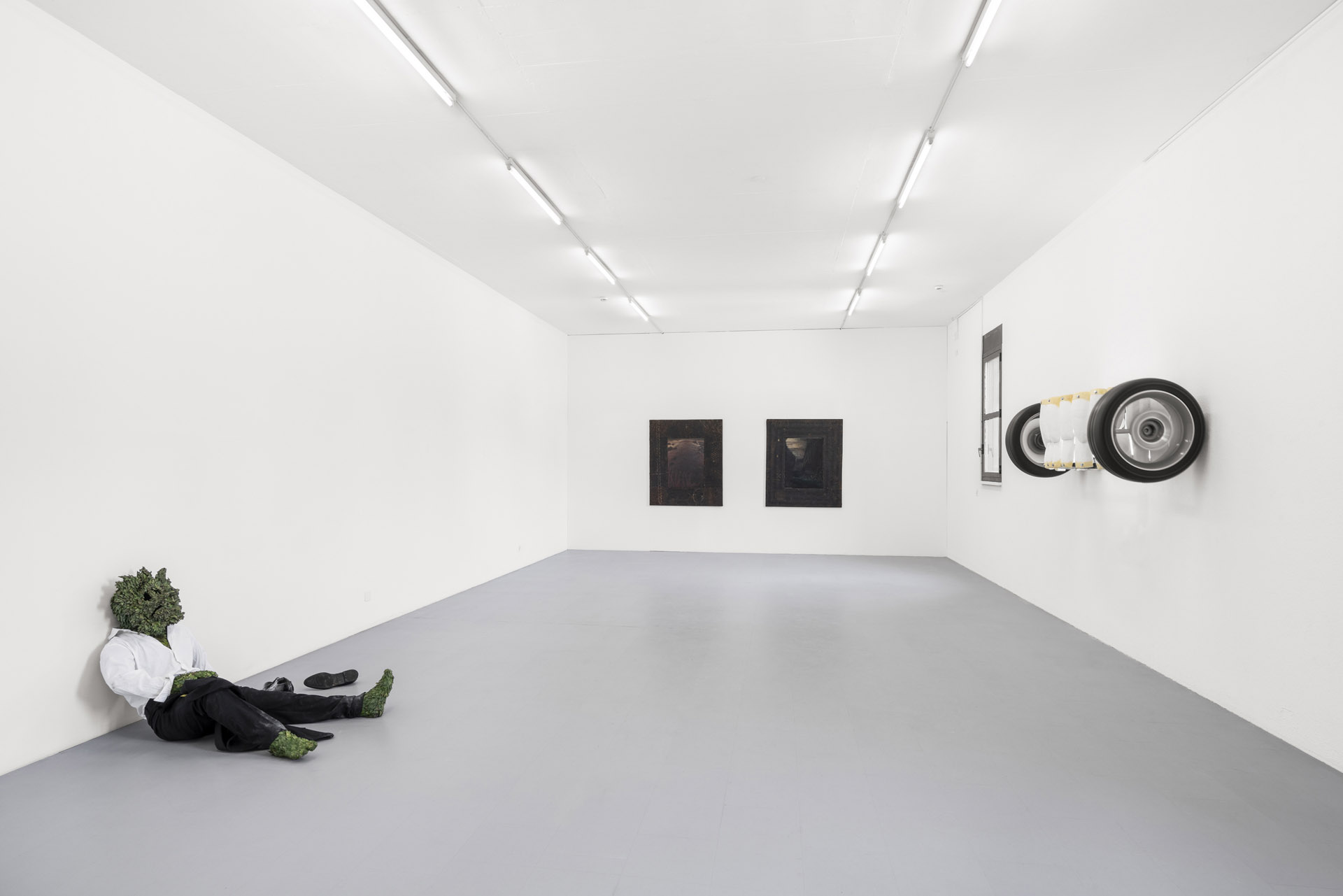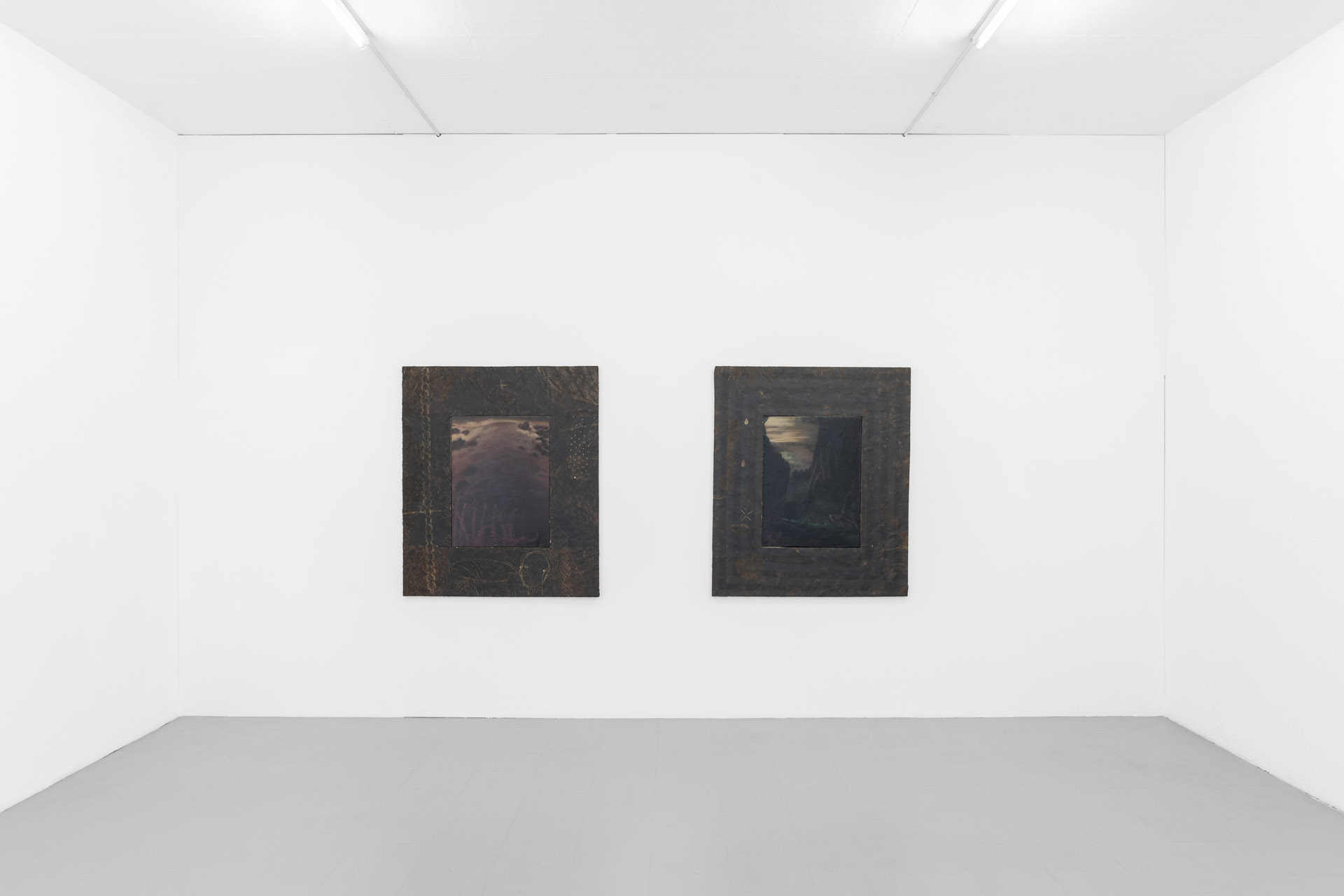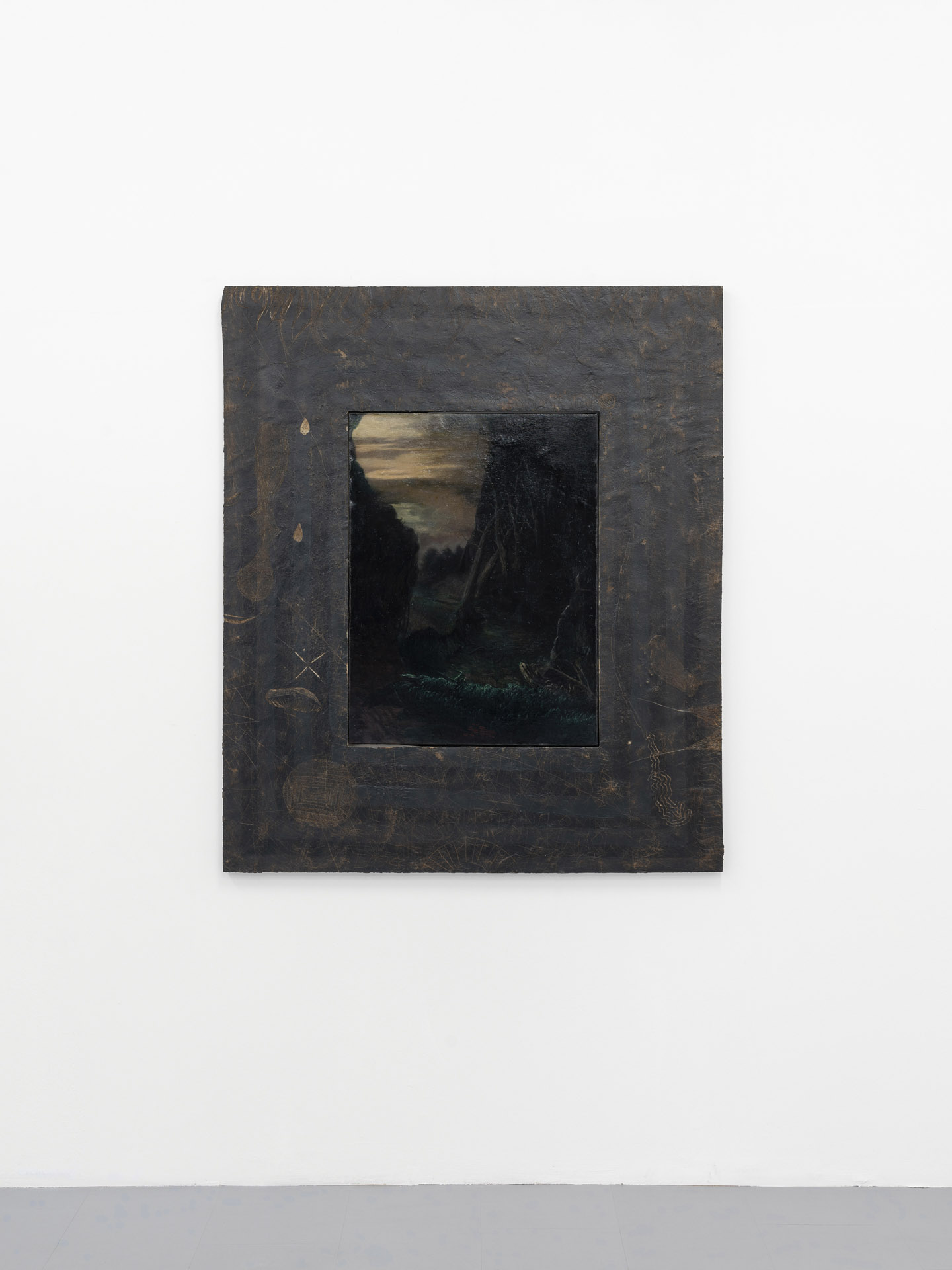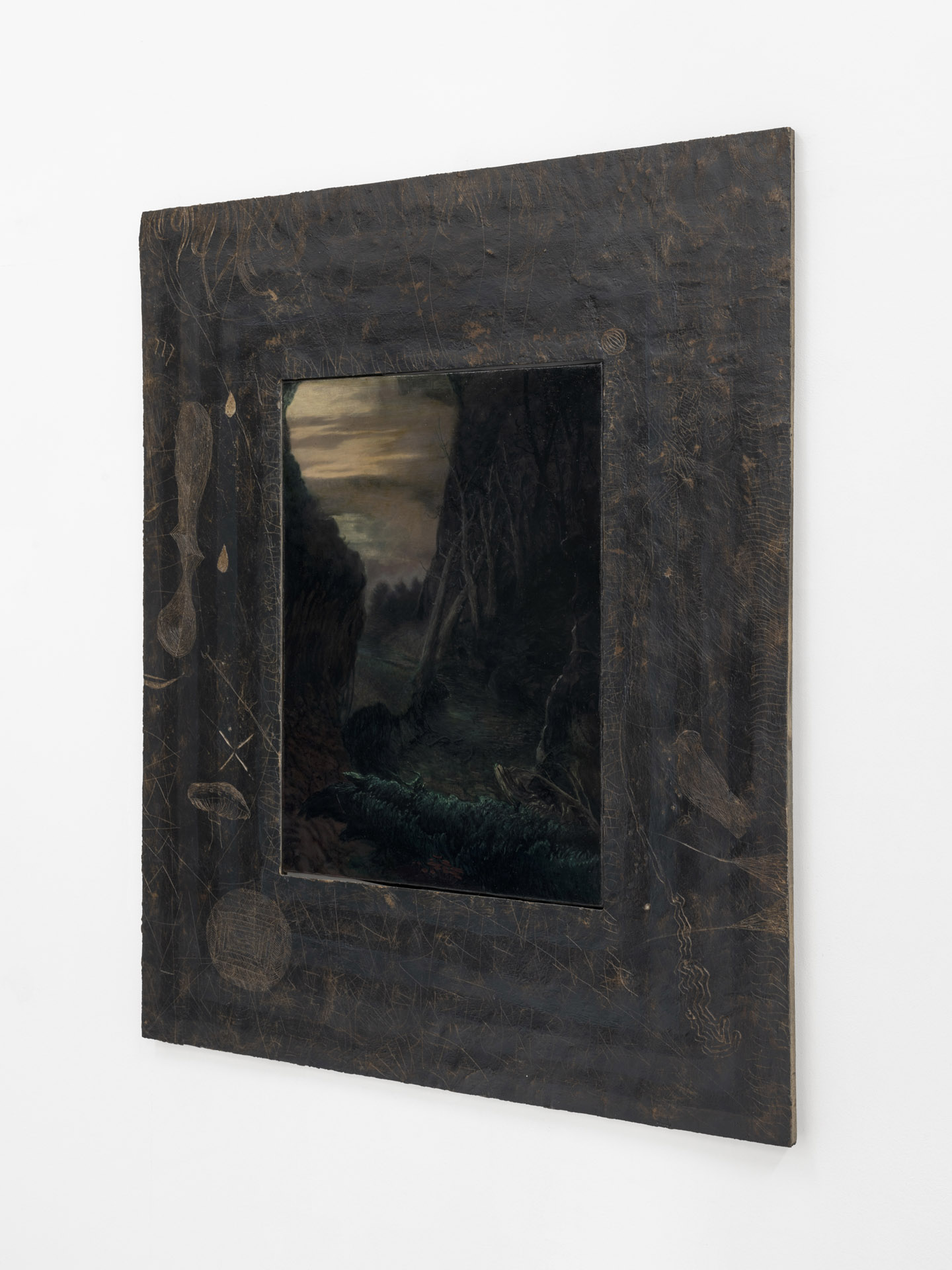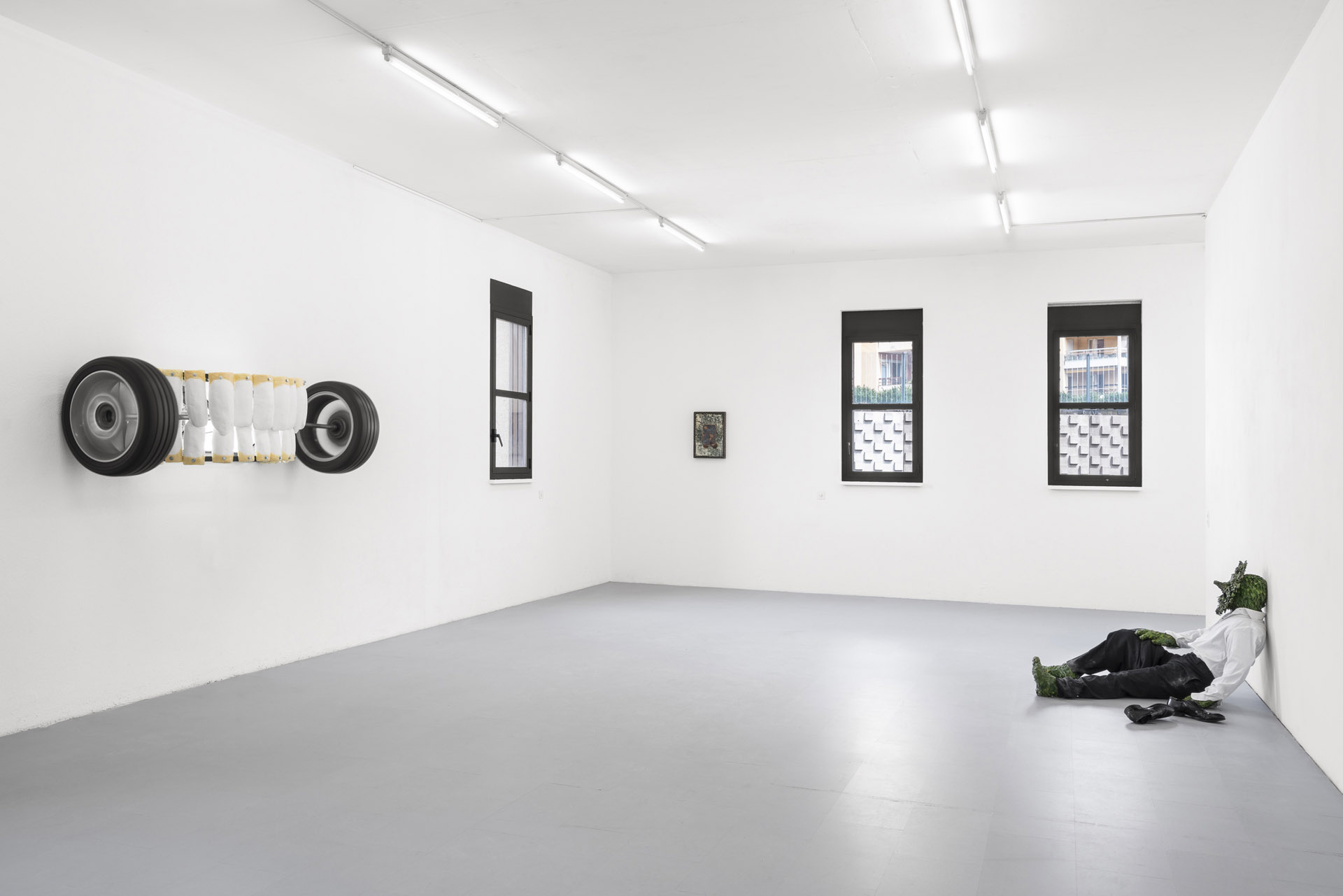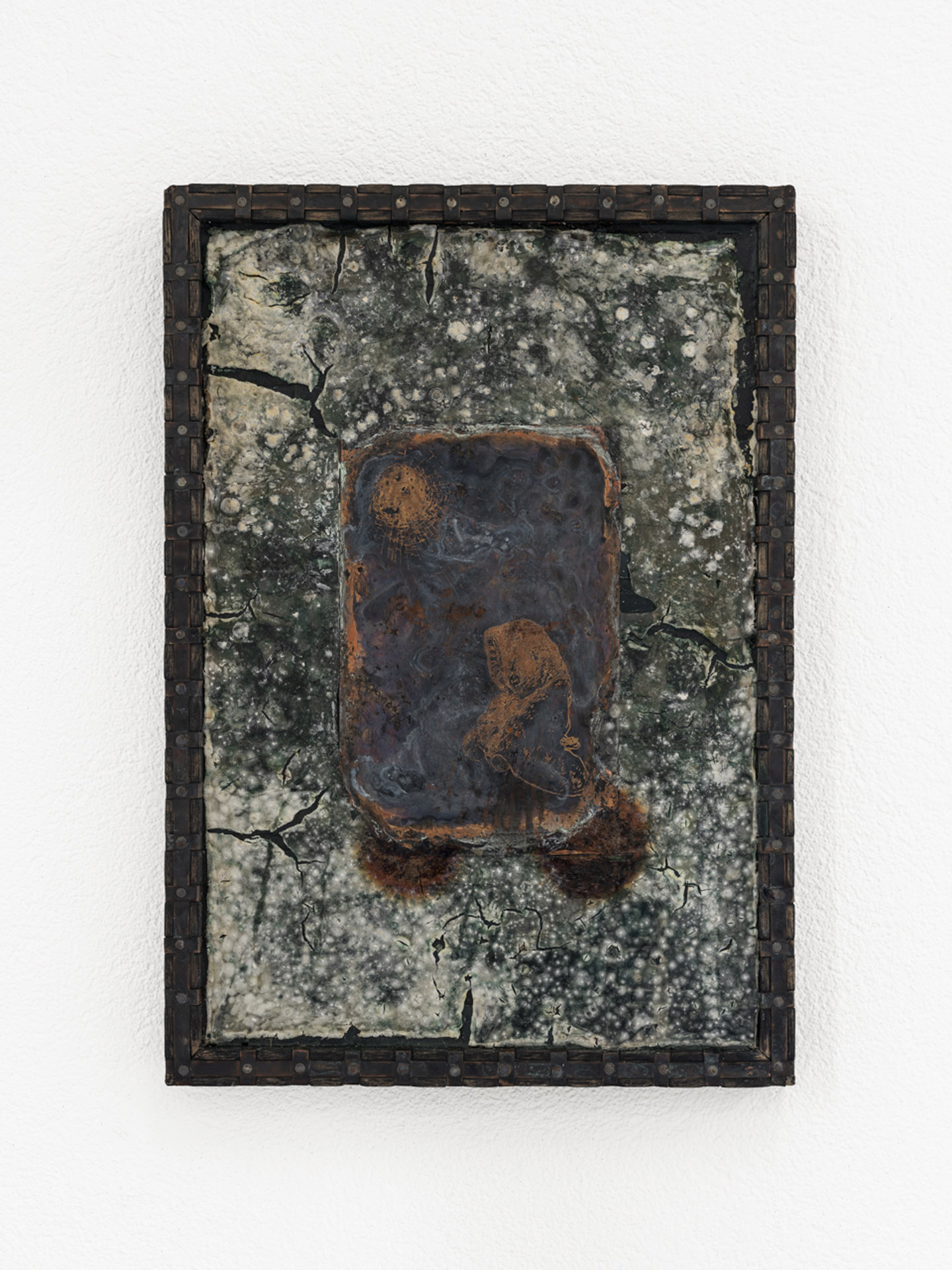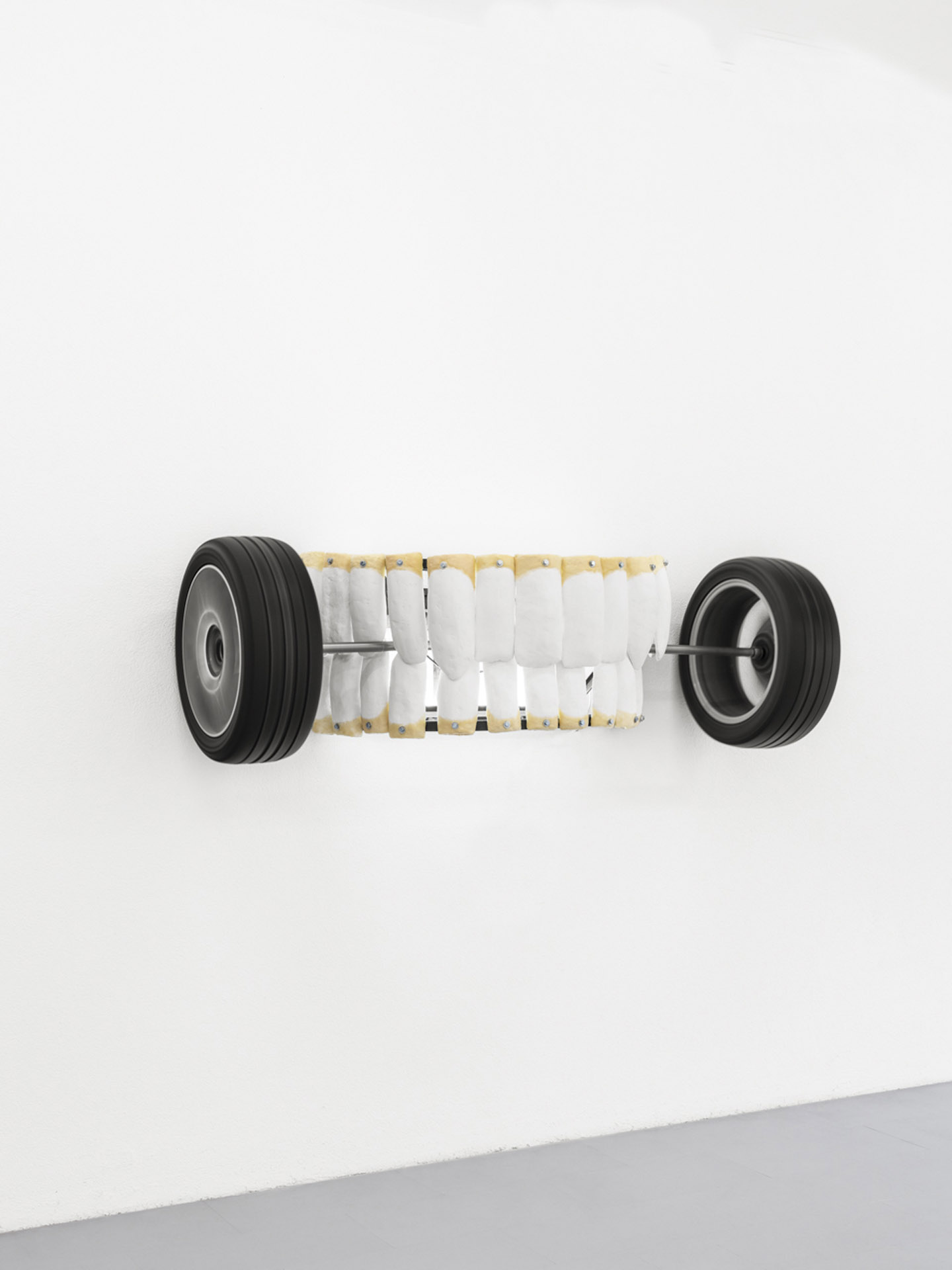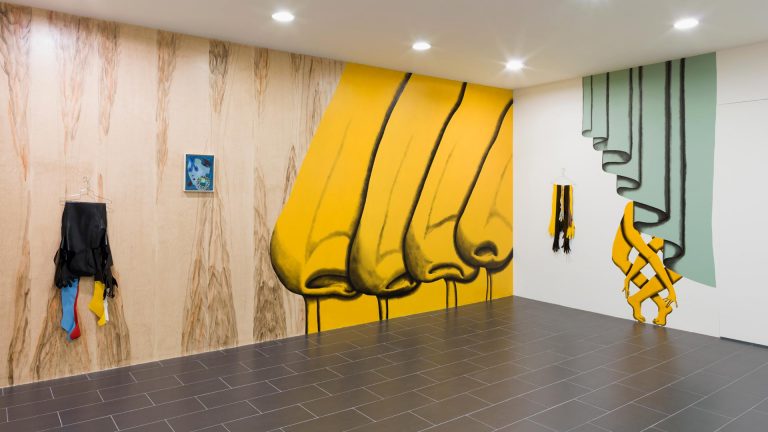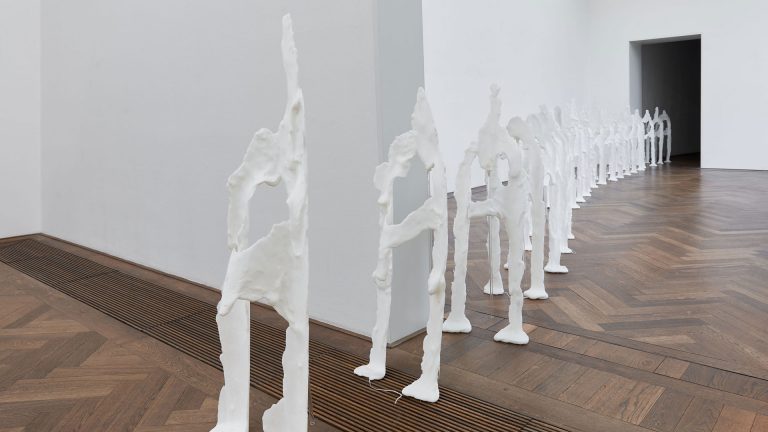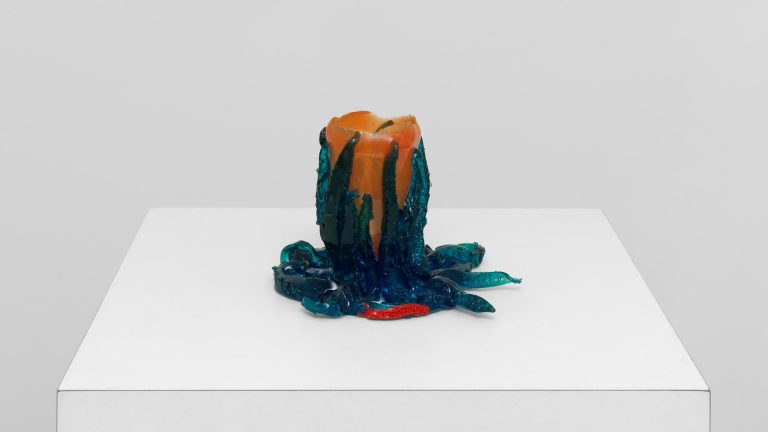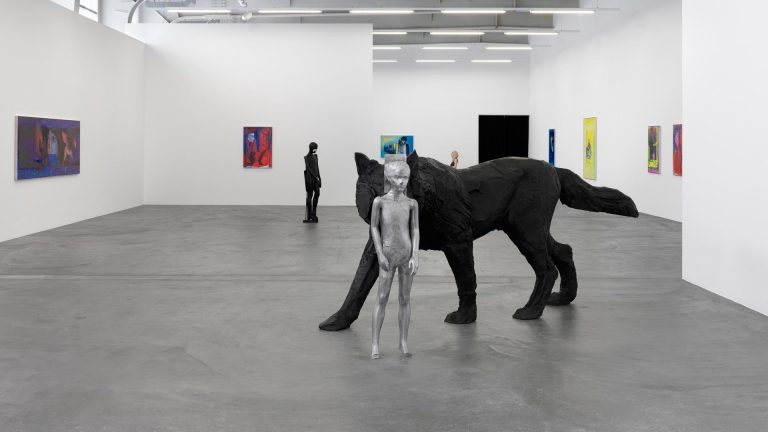Artists: Rada Koželj, Jacopo Belloni, Stefano Cecatiello, Jeronim Horvat
Exhibition title: Rosaspina
Curated by: Yimei Zhang and Tommaso Gatti
Venue: La Rada – Space for Contemporary Art, Locarno, Switzerland
Date: May 7 – June 12, 2022
Photography: all images copyright and courtesy of the artists and La Rada – Space for Contemporary Art, Locarno
La Rada – space for contemporary art in Locarno, is pleased to present Rosaspina, a group exhibition, curated by Yimei Zhang and Tommaso Gatti, which presents new works by four artists: Rada Koželj, Jacopo Belloni, Stefano Cecatiello and Jeronim Horvat. Rosaspina is inspired by the Grimm brothers‘ fairy tale and evokes the thick bush that protects and conceals, like the most delicate of flowers, the sleeping beauty. A metaphor for art and its impregnable secret, the title alludes to some of the suggestions shared by the works on display, such as the evocation of woodland imagery, plant forms and fairy-tale atmospheres.
The artists involved, while using different mediums, share an interest in ancient techniques and practices, which they use to read the contemporary world from unusual perspectives. Seduced by the magical and the esoteric, they investigate the language of the symbol, which goes beyond the limits of a thought that reduces art to the illustration of a caption.
On the occasion of Rosaspina, to keep faith with this fascination, the artists have created an evocative environment, in which the works emanate their own mystery while resonating like chords in a harmony.
Introducing us into the exhibition are two large galvanized iron masks by Jacopo Belloni. The sculptures take up the tradition of apotropaic masks, elements used for superstitious purposes to ward off evil spirits. These works ask to be celebrated as idols, nourished by cut flowers on the roadside, taken from the flowerbeds of residential neighborhoods, recovered from unsold florists. Waste of a society that the artist uses to activate fetish-works and transform the exhibition space into a contemporary place of worship in which obscure rituals of symbolic production of value are perpetuated.
All the works produced by the artist for Rosaspina, are developed around the theme of superstition, in the etymological sense of “subsisting beyond” threatening events. “In the current political-economic system,” writes the artist, “the plots of power that overlay our daily lives resemble a tangle of exclusive initiatory knowledge. A minority of the world’s increasingly wealthy and influential population stands out above the rest of humanity, experiencing a speculative, fairy-tale reality.” Starting with these suggestions, he creates The Superstitious, a life-size human mannequin slumped in a corner of the exhibition space. The character, dressed in an elegant but rumpled suit, has his skin completely covered in leaves. His features reflect the archetype of the wild man, a character from Alpine folk culture. In the Middle Ages, small groups of adult men dressed in leaves performed rituals to ward off periods of crisis. The sculpture takes up the costuming of these rituals to give life to an impotent figure, a sort of disheartened and exhausted businessman. We don’t know what has happened to him, whether he is returning from a masquerade, or whether his body is changing under the influence of a spell. Only despondency, fear, and fatigue shine through.
Rada Koželj’s paintings, located in the central corridor, originate from sketches traced in felt-tip pen on canvas, a technique reminiscent of the artist’s childhood and the playful spirit of her first drawings. Starting from these traces, the artist creates paintings through a pictorial superimposition that stages the progressive stratification of an evolutionary process.
The imaginative and multiform imagery of childhood thus serves as an iconographic reservoir from which Rada draws to give form to scenes that give access to a fantastic elsewhere in which the usual, with its stereotypes, gives way to archetypal images, living symbols that grow and change in meaning at every new glance.
On this occasion, Rada brings together a corpus of old and new works, united by the recurrent presence of embryonic figures, entities whose protuberant and tentacular features give life to images that belong to the sphere of the benevolent monstrous. These creatures, vaguely self-representative, move melancholically immersed in oneiric landscapes, becoming protagonists of events full of experience.
A sinister mechanical noise comes from the last room, emitted by Teeth Grinder, a sculpture by Jeronim Horvat. Approaching the work, suspended at half height on the right side wall, you can hear the creaking diplast. A long series of white teeth is arranged on an iron structure, as if to create the robotic grin of a Luna Park monster. Pressed between the teeth, a steel rod rotates in an endless motion. At both ends of the bar, two tires brush against the back wall, as if trying to escape from a vice to which they will remain forever nailed. Gears of a perverse mechanism, the wheels evoke in the viewer unpleasant physical sensations, the perception of a movement eternally frozen in a suspended and cyclic temporality, a sense of frustration for the futility of an effort, the concretization of the expression “grinding one’s teeth” and its psychological implications, a presence at the same time disturbing and pleasant as that of a fairy-tale monster.
To conclude the path of the exhibition is the work of Stefano Cecatiello, an artist who pursues a pictorial research that looks to the Gothic romanticism, to create works full of decadent mystery. On the occasion of Rosaspina, he paints two views: a path that enters a desolate forest and the vertical silhouette of a slope. Each canvas is framed within a wax panel that the artist scratches, pinning images, signs and symbols, as if to make visible the graphic subconscious from which the work emerges. Accompanying the two large works, the artist presents a small engraving on oxidized copper – representing a mysterious hooded figure – placed inside a culture of molds and embellished by a frame in copper and inlaid wood. The work, which has the same formal structure as the canvases, shifts the accent from the subject of painting to its exasperated materiality, using obscure techniques of fungal inoculation and metal oxidation to evoke alchemical imagery of putrefaction and corruption of the pictorial matter.
Rosaspina, installation view at La Rada, Locarno 2022, Photo by Riccardo Giancola, Courtesy: Artists and La Rada, Locarno
Jacopo Belloni, Mascherone I(2022), Galvanized iron, flowers collected, stolen or recovered, variable dimensions., Photo by Riccardo Giancola, Courtesy: Artists and La Rada, Locarno
Jacopo Belloni, Mascherone I(2022), Galvanized iron, flowers collected, stolen or recovered, variable dimensions., Photo by Riccardo Giancola, Courtesy: Artists and La Rada, Locarno
Rada Koželj, Dal nascondiglio (2022), Nonostante tutto, un tramonto mozzafiato (2022), Acrylic on canvas, 30 x 40 cm and 40 x 60 cm., Photo by Riccardo Giancola, Courtesy: Artists and La Rada, Locarno
Jacopo Belloni, Mascherone II (2022), Galvanized iron, flowers collected, stolen or recovered, variable dimensions, Photo by Riccardo Giancola, Courtesy: Artists and La Rada, Locarno
Jacopo Belloni, Mascherone II (2022), Galvanized iron, flowers collected, stolen or recovered, variable dimensions, Photo by Riccardo Giancola, Courtesy: Artists and La Rada, Locarno
Rosaspina, installation view at La Rada, Locarno 2022, Photo by Riccardo Giancola, Courtesy: Artists and La Rada, Locarno
Rada Koželj, Leggenda (2022), Acrylic on canvas, Photo by Riccardo Giancola, Courtesy: Artists and La Rada, Locarno
Rada Koželj, La ragazza che cade (2022), Acrylic on canvas, 30×40 cm, Photo by Riccardo Giancola, Courtesy: Artists and La Rada, Locarno
Rosaspina, installation view at La Rada, Locarno 2022, Photo by Riccardo Giancola, Courtesy: Artists and La Rada, Locarno
Jacopo Belloni, Il superstizioso (2022), Ivy leaves, man_s suit, shirt, tie, leather shoes, paper mache, ducktape, ashes, glue, plaster, wire, zinc galvanized leaves, cigarettes, brass and bronze pendant, variable dimensions, Photo by Riccardo Giancola, Courtesy: Artists and La Rada, Locarno
Jacopo Belloni, Il superstizioso (2022), Ivy leaves, man_s suit, shirt, tie, leather shoes, paper mache, ducktape, ashes, glue, plaster, wire, zinc galvanized leaves, cigarettes, brass and bronze pendant, variable dimensions, Photo by Riccardo Giancola, Courtesy: Artists and La Rada, Locarno
Rosaspina, installation view at La Rada, Locarno 2022, Photo by Riccardo Giancola, Courtesy: Artists and La Rada, Locarno
Stefano Cecatiello, Untitled II (2022), oil and shellac on Canvas and tempera, wax, sawdust and nails on board, 140x120cm, Photo by Riccardo Giancola, Courtesy: Artists and La Rada, Locarno
Stefano Cecatiello, Untitled II (2022), oil and shellac on Canvas and tempera, wax, sawdust and nails on board, 140x120cm, Photo by Riccardo Giancola, Courtesy: Artists and La Rada, Locarno
Stefano Cecatiello, Untitled II (2022), oil and shellac on Canvas and tempera, wax, sawdust on board, 140x120cm, Photo by Riccardo Giancola, Courtesy: Artists and La Rada, Locarno
Stefano Cecatiello, Untitled I (2022), oil and shellac on Canvas and tempera, wax, sawdust on board, 140x120cm, Photo by Riccardo Giancola, Courtesy: Artists and La Rada, Locarno
Rosaspina, installation view at La Rada, Locarno 2022, Photo by Riccardo Giancola, Courtesy: Artists and La Rada, Locarno
Stefano Cecatiello, Untitled (Mold) (2022), oil colors, shellac, wax, isinglass, mold on board and aniline, oxidized copper on wood, 48×35 cm, Photo by Riccardo Giancola, Courtesy: Artists and La Rada, Locarno
Jeronim Horvat, Teeth Grinder (2022), steel, car wheels, electrical engine, diplast, latex, 196cm x 57cm x 55cm, Photo by Riccardo Giancola, Courtesy: Artists and La Rada, Locarno
Detail of Jeronim Horvat, Teeth Grinder (2022), steel, car wheels, electrical engine, diplast, latex, 196cm x 57cm x 55cm, Photo by Riccardo Giancola, Courtesy: Artists and La Rada, Locarno

